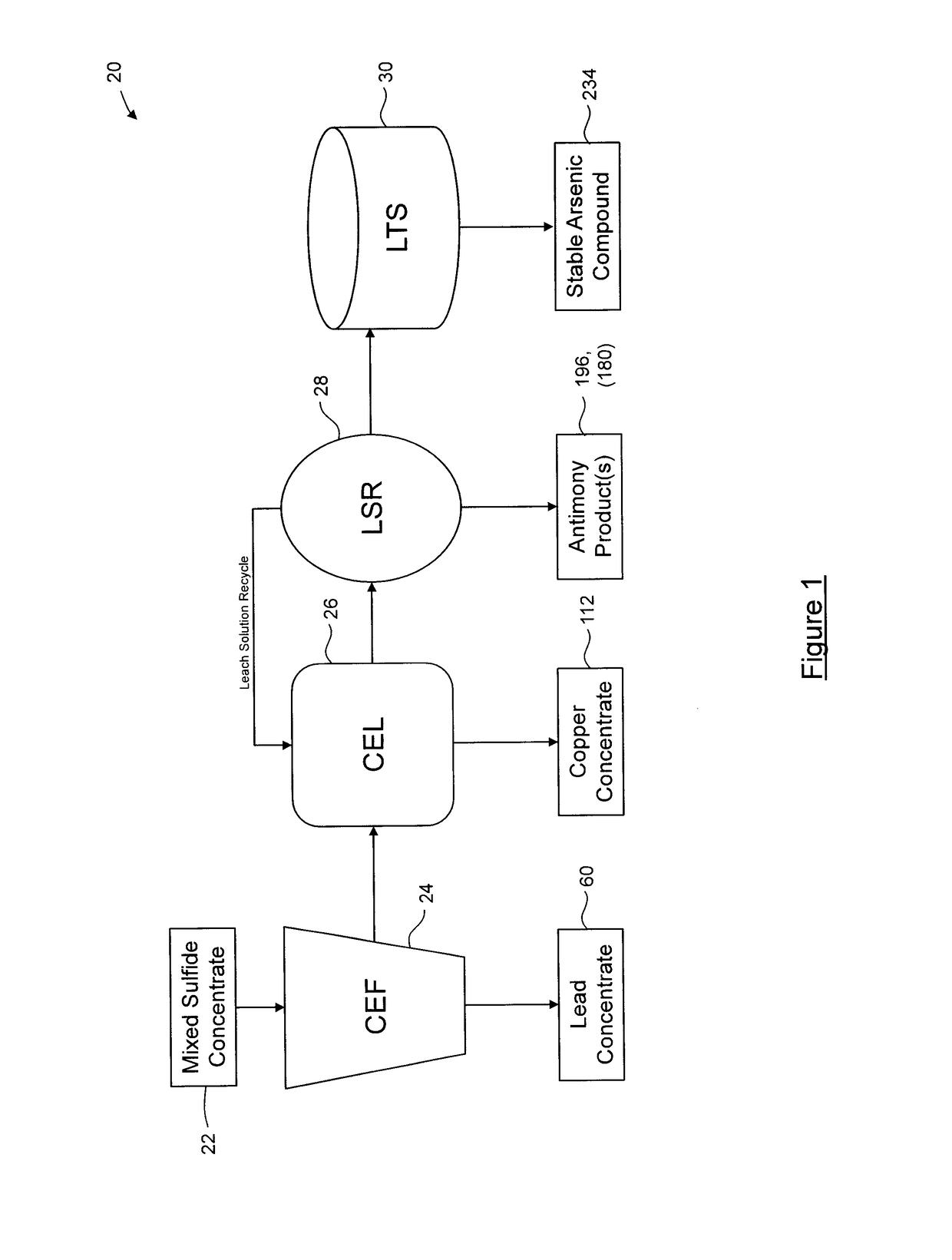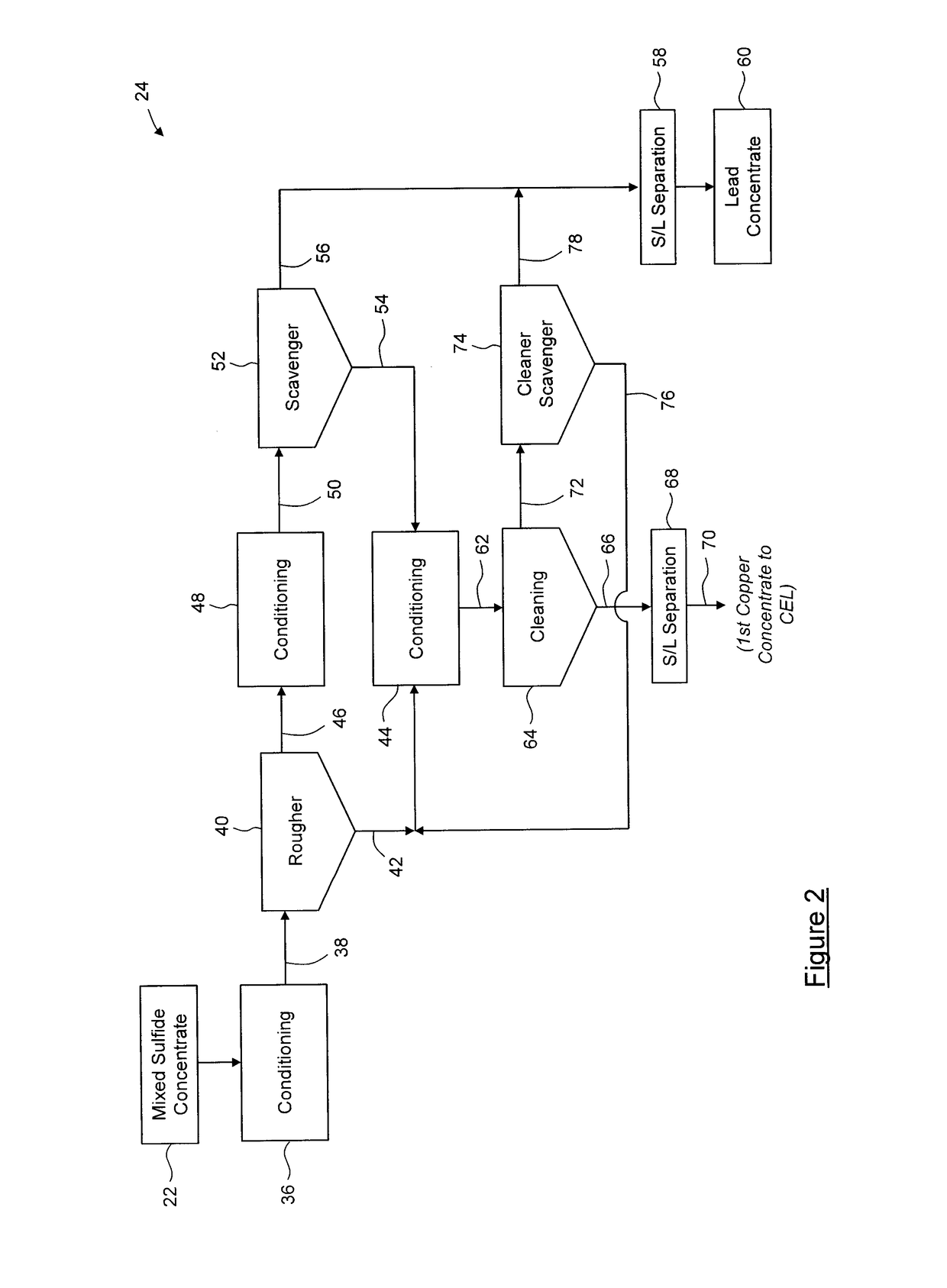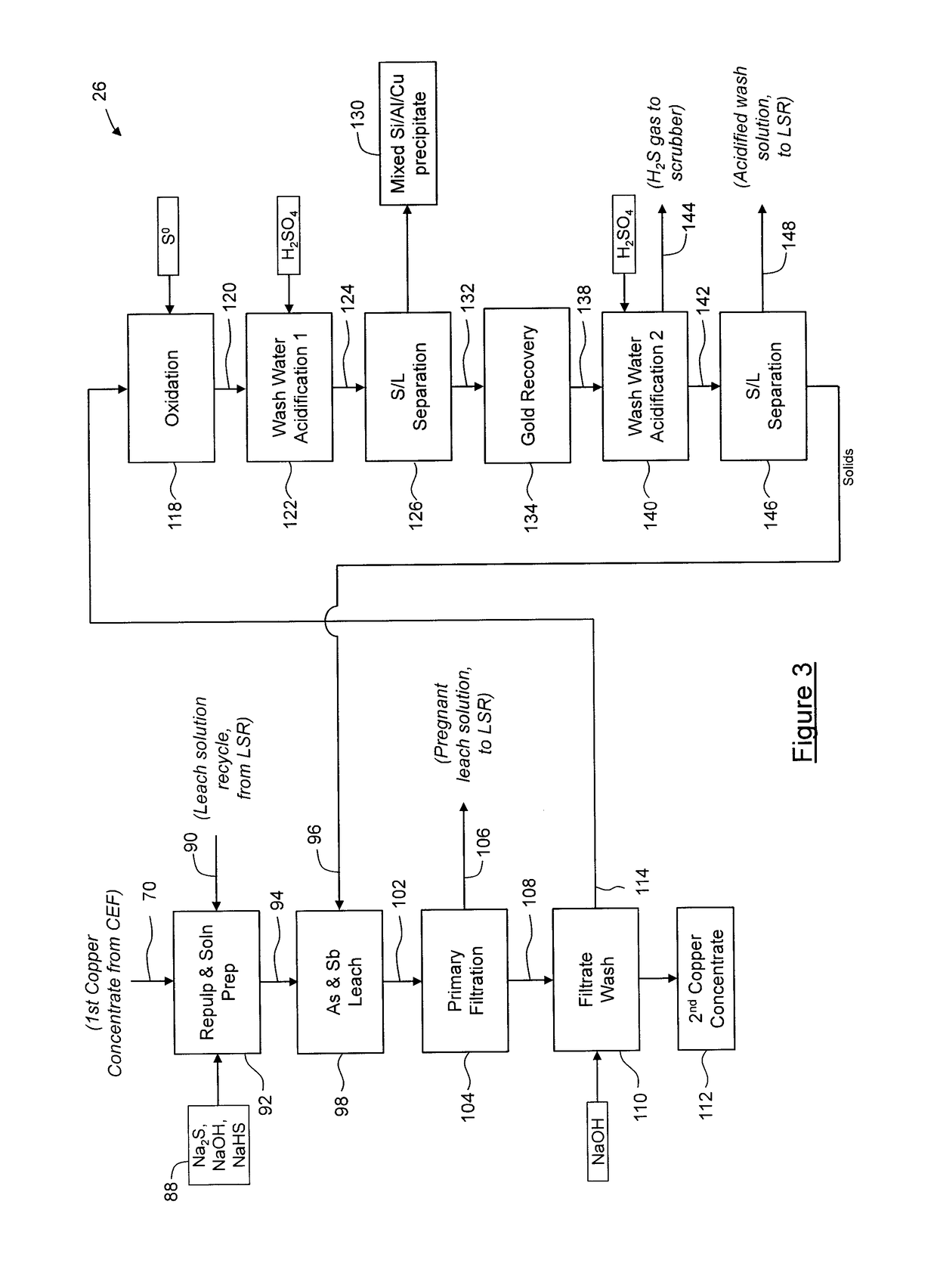Process for separation of at least one metal sulfide from a mixed sulfide ore or concentrate
a technology of mixed sulfide ore and concentrate, which is applied in the field of metal ores or concentrates, can solve the problems that known metallurgical processes do not provide satisfactory metal sulfide separation from such ores and concentrates
- Summary
- Abstract
- Description
- Claims
- Application Information
AI Technical Summary
Benefits of technology
Problems solved by technology
Method used
Image
Examples
example 1
[0148]In Examples 1 to 3, “locked cycle” flotation tests were performed to evaluate the removal and separation efficiency of arsenic and antimony containing sulfosalts from the mixed sulfide concentrate.
[0149]In this example, the test was performed on a high copper feed concentrate using four locked cycles with a rougher and three stages of cleaning. The collector was a thiocarbamate (Aero A5100), the depressant was sodium metabisulfite (SMBS), and the dispersant was a caustic starch solution.
[0150]The results of the test are shown in Table 1. About 89% of the lead reported to the lead concentrate, while about 80% of the copper, about 82% of the arsenic and about 91% of the antimony reported to the copper concentrate.
TABLE 1Mass,Cu,As,Sb,Pb,Assays%%%%%Pb-Cu bulk conc.10030.08.37.924.2Cu conc.6338.511.014.73.9Pb conc.3715.74.12.351.8Distribution, %—CuAsSbPbPb-Cu bulk conc.100100100100100Cu conc.6380829111Pb conc.372018989
example 2
[0151]In this example, a “locked cycle” flotation test was performed on a lower copper feed concentrate than the concentrate of Example 1, using six locked cycles with a rougher and three stages of cleaning. In this example, the collector was Aero A5100, the depressant was SMBS, and the dispersant was a caustic starch solution.
[0152]The results of this test are shown in Table 2. About 99% of the lead reported to the lead concentrate, while about 78% of the copper, about 84% of the arsenic and about 74% of the antimony reported to the copper concentrate.
TABLE 2Mass,Cu,As,Sb,Pb,Assays%%%%%Pb-Cu bulk conc.1006.51.11.857.8Cu conc.1435.47.512.63.6Pb conc.861.70.20.767.3Distribution, %—CuAsSbPbPb-Cu bulk conc.10010100100100Cu conc.147884741Pb conc.8622162699
example 3
[0153]In this example, a “locked cycle” flotation test was performed on a similar feed material to Example 2, using six locked cycles with a rougher and three stages of cleaning. In this example, the collector was Aero A5100, the depressant was ammonium bisulfite, and the dispersant was a caustic starch solution.
[0154]The results of this test are shown in Table 3. About 97% of the lead reported to the lead concentrate, while about 84% of the copper, about 86% of the arsenic and about 81% of the antimony reported to the copper concentrate.
TABLE 3Mass,Cu,As,Sb,Pb,Assays%%%%%Pb-Cu bulk conc.1006.31.23.756.2Cu conc.1927.95.515.49.4Pb conc.811.20.20.862.3Distribution, %—CuAsSbPbPb-Cu bulk conc.100100100100100Cu conc.198486813Pb conc.8116141997
PUM
| Property | Measurement | Unit |
|---|---|---|
| concentration | aaaaa | aaaaa |
| concentration | aaaaa | aaaaa |
| concentration | aaaaa | aaaaa |
Abstract
Description
Claims
Application Information
 Login to View More
Login to View More - R&D
- Intellectual Property
- Life Sciences
- Materials
- Tech Scout
- Unparalleled Data Quality
- Higher Quality Content
- 60% Fewer Hallucinations
Browse by: Latest US Patents, China's latest patents, Technical Efficacy Thesaurus, Application Domain, Technology Topic, Popular Technical Reports.
© 2025 PatSnap. All rights reserved.Legal|Privacy policy|Modern Slavery Act Transparency Statement|Sitemap|About US| Contact US: help@patsnap.com



